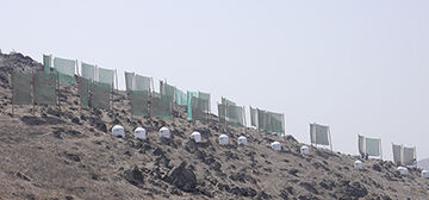Santa Monica Bay catchment area stewards and stakeholders work together to keep our local waters clean and plentiful. In the midst of a drought and in the fight against pollution from visitors and residents, there is a constant battle for workable solutions.
The Santa Monica Bay Community was founded in the 1990s. Concerned members and agencies met online on Thursday, September 23rd to share their latest efforts.
One way to keep the bay healthy is to monitor the streams that feed it. Alberto Grajeda, assistant civil engineer for the LA County Department of Public Works (DPW), described a new project that affects northern Santa Monica Bay from Malibu to Topanga. The Viewridge Road project, currently under construction, is an underground filtration system that will be installed east of Topanga Canyon Blvd on Viewridge Road. Currently the water is untreated as it flows into Topanga Canyon all the way to the bay. In addition to filtering the water, the DPW project will add 16 trees to the urban canopy at street level.
Another underground treatment project is being planned on Liberty Canyon Road in Agoura to improve water quality and reduce pollutants. Capturing water from storm runoffs in Liberty Canyon diverts the river to condition the water, trap debris, and then filter it of other toxins. Cleaner water is then diverted back to Santa Monica Bay. The project is expected to be completed by the end of 2024.
The money to fund many of the projects advertised at the meeting comes from Measure W, which was passed three years ago during another multi-year drought. LA County voters voted 68 percent of the measure to improve surface water quality, rainwater before reaching the oceans and rivers, pollution, and improving and enhancing water supplies.
According to Dr. LB Nye of the Los Angeles Water Quality Control Board has a big problem.
“Trash is an ongoing struggle,” said Nye, adding, “A new regulation focuses on landowners, including in Malibu, and their commitments to reduce the amount of litter entering Malibu Creek. We partner with the National Park Service, California [State] Parks and all landowners. “
Another major project to reclaim used water was explained by Dave Roberts, Resource Conservation Manager for Las Virgenes Municipal Water District (which includes part of zip code 90265 but does not include the city of Malibu). The Pure Water Project takes wastewater from the Tapia Reclamation Facility and converts it into potable drinking water. The technology of how this process works will be demonstrated at the water district headquarters on Las Virgenes Canyon Road. Finally, a large company will be housed on Agoura Road.
“Once it’s operational, all of the wastewater we currently channel into Malibu Creek will be turned into potable water,” said Roberts. “This is the first time that we will have a local source of drinking water, since 100 percent of all of our water is imported. This will reduce the need for imported water for the district by 20 percent. It will be one of our greatest conservation efforts. “
And on the subject of wastewater, the Santa Monica Mountains Resource Conservation District conducted a study to find out whose droppings end up in the Topanga watershed. The results show some human markers, but the biggest culprits are dogs and seagulls. However, according to Rosi Dagit of the Conservation District, a senior conservation biologist, only a debris, which could be from a dirty diaper or a passing human, causes significant bacterial damage. And that’s not the only problem.
“Fire sediment removal continued in collaboration with the California Conservation Corps and other agencies,” Dagit said, later adding, “We haven’t found a steelhead in the Malibu Creek watershed since March 2017. The Santa Monica Mountains is Topanga.”
Dagit answered a question about the reported increased algae in the Malibu Lagoon.
“The Bay Foundation folks are investigating what kind of discharge is coming from the construction project in the Civic Center area that has a permit to dump 200,000 gallons a day or something crazy,” she said. “We don’t have an answer yet.”
The zoom session ended with a presentation on an innovative water project in Peru that is of particular interest to California during a drought. Fog net water catchers are quite primitive devices currently in use in the South American country. The mist catchers are used by people who live off the grid. Nets catch mist and microdroplets that go through pipes and are collected in tanks. Up to 400 square meters of water can be collected with the simple devices of daily life and smallholder agriculture.


Comments are closed.